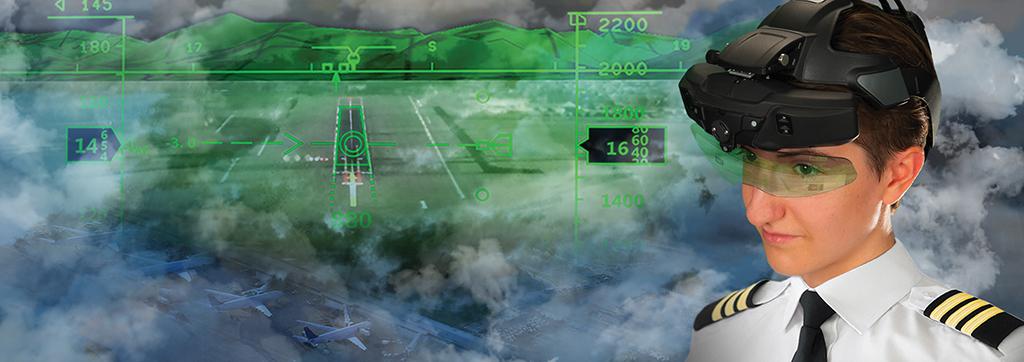
The coronavirus pandemic all but grounded aviation, but when the skies clear, there will be no shortage of great new avionics and ideas for flying blind.
As we were finalizing this year’s review of all things avionic, the coronavirus pandemic was rapidly expanding. In response, airframers, avionics makers, MROs and FBOs were squinting to see any positive news and with many also hitting the Pause button.
Almost all the big air shows and industry gatherings were postponed or canceled, including EBACE, Sun ’n Fun and Farnborough’s huge biennial event. Business aviation activity was down by 30% or more, and descending further.
Many avionics makers were issuing statements expressing their confidence that despite temporary layoffs or reduced production, things would return to normal when the worst had passed — even if nobody could say when that would be. Universal Avionics was providing a non-profit group with assembly line space at its headquarters in Tucson, Arizona, to manufacture medical face masks and shields. Other aviation manufacturers — Piper, Textron Aviation, Honeywell, CAE and General Electric among the many — were ramping up production of specialized gear to help protect medical personnel and aid those infected with the virus.
So, we decided the only logical response to those circumstances was to punt with a snapshot summary of the avionics sector just before all hell broke loose in the U.S. in early April. That said, we hold firm to the expectation that eventually goodly numbers of new aircraft will begin rolling off production lines again, all fitted with new avionics, and that operators of existing aircraft will continue to upgrade their flight decks.
Call for Backup
In the opinion of many — including the Aviation Week & Space Technology editorial team that recently awarded it a Laureate — the most consequential event in general aviation avionics in a very long time occurred in October 2019 when Garmin International introduced its Autoland system.
An emergency landing system for light business aircraft, it can be activated by the pilot or passengers by simply pushing a guarded red button. It can also self-activate automatically in extreme circumstances. The system takes full control of the aircraft, notifies ATC and then flies to and lands at the most appropriate airport — all automatically.
The system’s FAA approval and entry into service seems imminent on several aircraft. It’s part of Garmin’s newly branded Autonomi package, which includes electronic stability and protection and emergency descent mode. (For more, see “Flying Garmin’s New Emergency Autoland,” BCA, October 2019.)
Now, there may be another auto concept to consider. Skyryse, a Los Angeles-based transportation startup, has unveiled a new “universal flight automation system.” The technology, it claims, can be retrofitted into any aircraft to enable virtually anyone to fly as safely as a crew of professional pilots using the system’s intuitive controls — and an iPad.

The aircraft-agnostic system, known as Skyryse FlightOS, introduces a new paradigm in flight safety and capabilities through simplified flight controls. It’s quite a claim, and it would be easy to dismiss as vaporware designed by a kid in their basement. The company’s video pitch, however, is compelling; the Skyryse folks may indeed be on to something. The company has raised $38 million from world-class investors, including Bill Ford, CEO of Ford Motor Co., as well as Stanford University and Venrock.
Unlike other companies building autonomous vertical takeoff and landing (VTOL) aircraft from scratch or only for the military, Skyryse refits existing certified aircraft and technologies with as-yet undescribed software and hardware innovations. The Skyryse FlightOS was initially designed for and demonstrated on a Robinson R44 helicopter. Each component of the system works in triplicate with fail-operational technology to ensure that automation functions remain operational at all times, even in the presence of equipment failures.
Skyryse claims it’s a year away from FAA certification. Founder/engineer Vance Creighton told BCA that Skyryse doesn’t see itself as competitive with Garmin’s Autoland. “It’s important to be distinct as to the different parts of the company and technology. Skyryse as a company has a mission to provide the safest, fastest and most uplifting transportation. Our goal is to democratize the air, by making air transportation accessible for everyone and having a positive impact on the communities we serve.
“To help create this future,” Creighton continues, “we’ve created the Skyryse FlightOS and are now offering FlightOS as the first product from [a] suite of technologies we are selling. FlightOS is always on and continuously keeps the pilot within the flight envelope and will manage emergencies. FlightOS also differs in that it works with all aircraft while Garmin’s technology works with only two types of aircraft. We created FlightOS as an entire industry solution for everything from eVTOLs to a Sikorsky S-80 to unlock the future of urban air mobility.” Watch this space for updates.
Got ROAAS?
Meanwhile, runway overruns are a leading cause of incidents and accidents. In response to customer input, optional avionics upgrades for Embraer’s new Phenom 300E now include predictive wind-shear awareness and an Embraer-developed runway overrun awareness and alerting system (ROASS) to warn pilots if the aircraft’s approach is too steep or too fast.
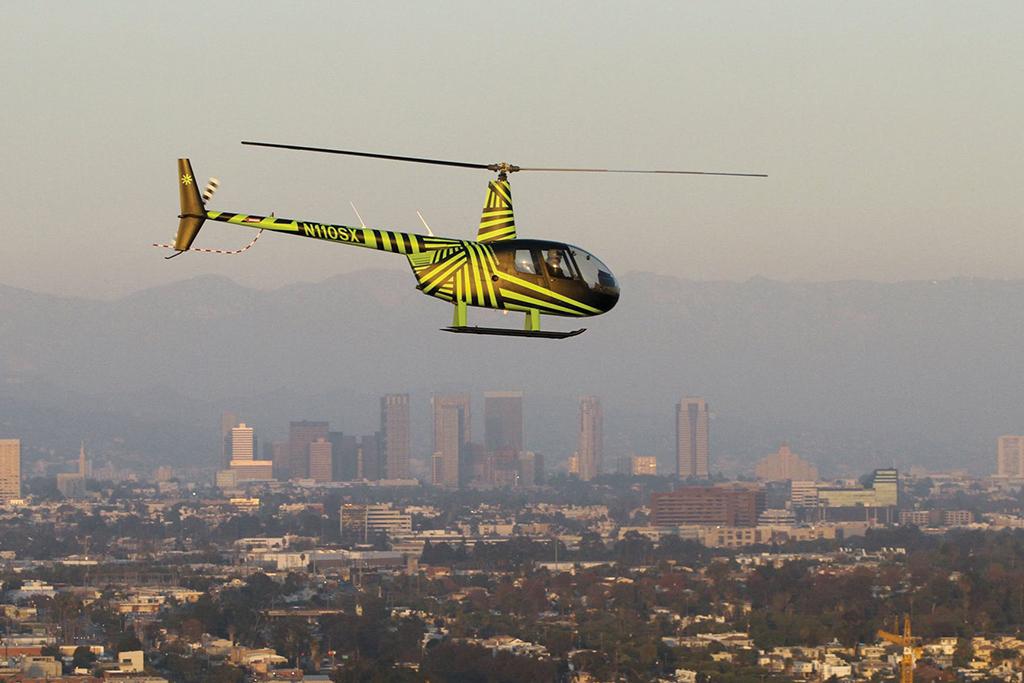
The alerting system, which engages at 1,000 ft. AGL, warns the crew through primary flight display messages, aural alerts and data recorder, prompting a go-around. The upgrade also includes a standard new weather radar, ADS-B In, an emergency descent mode, graphical weight and balance, VFR approach, coupled go-around and other items.
Helo TAWS
Over the past two decades, the U.S. helicopter fatal accident rate has been halved, from 1.27 per 100,000 flights to 0.63, according to the U.S. Helicopter Safety Initiative’s figures. However, the crash that killed Kobe Bryant and eight other people in late January has put a new focus on rotary-wing safety. Accordingly, U.S. Rep. Brad Sherman (D-Calif.) has introduced legislation to require terrain awareness and warning systems (TAWS) on all helicopters.
In a press release accompanying the announcement of the “Kobe Bryant and Gianna Bryant Helicopter Safety Act,” Sherman declared, “Had this [TAWS] system been on the [accident] helicopter, it is likely the tragic crash could have been avoided.”
The press release didn’t provide any evidence for the claim. In February, Vanessa Bryant filed a wrongful death lawsuit against Express Helicopters and Island Express Holding Corp. for dispatching the Sikorsky S-76 helicopter in which her husband and 13-year-old daughter and seven others were killed. The suit alleges that Ara Zobayan, the lone pilot, failed “to use ordinary care in piloting the subject aircraft” and was “negligent” when taking off Jan. 26 for the fatal flight.
Talk to Me
Switzerland’s RUAG has developed a Controller-Pilot Data Link Communications (CPDLC) upgrade kit for Embraer Legacy 600/650 aircraft. Operators are free to decide if they prefer to opt for CPDLC as outlined by Mandate 2020 from both the European Union Aviation Safety Agency (EASA) and the FAA. The upgrade requires five days’ downtime for the implementation.

Meanwhile, German sensor and avionics tech companies Hensoldt and Diehl are developing a radar and camera system that can reliably detect objects in the flight path of UAVs. The recognition of such obstacles is one of the essential requirements for deploying the unmanned aircraft in controlled airspace.
The Manufacturers
What follows is a summary of significant product and service developments since last June.
Aspen Avionics
Albuquerque, New Mexico-based Aspen Avionics has added new features and functions for its Evolution E5 Electronic Flight Instrument (EFI). New features include traditional horizontal situation indicator (HSI), outside air temperature (OAT), true airspeed (TAS), wind direction and speed, and WAAS GPS mode annunciations. Starting at $4,995, the E5 EFI is approved for both IFR and VFR flight.
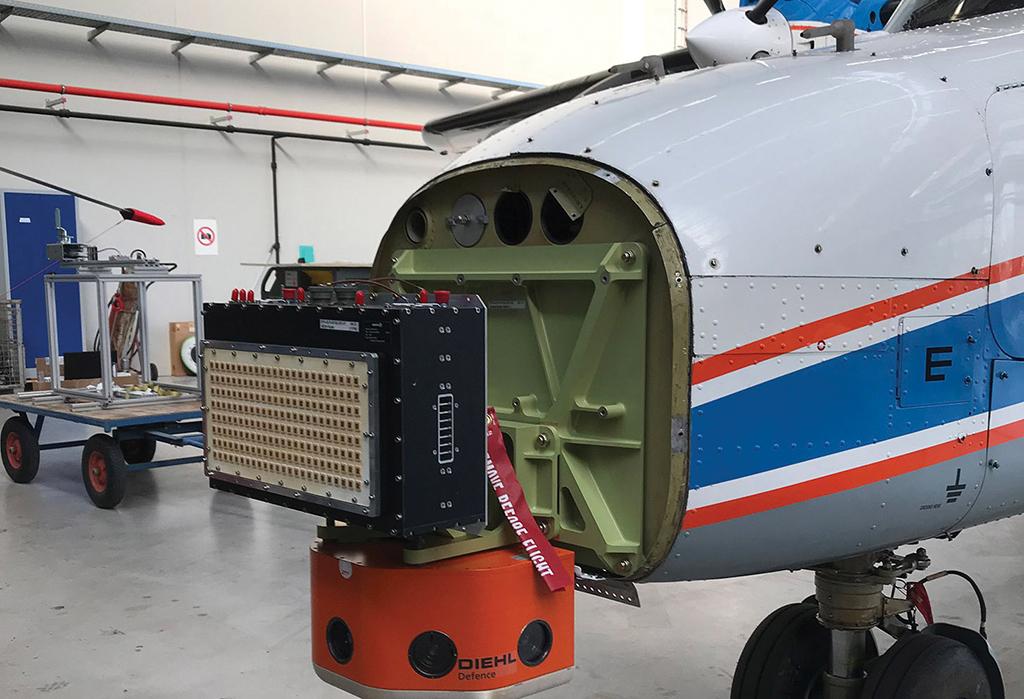
When introduced in 2018, the Evolution E5 EFI combined an attitude indicator plus DG/CDI into a single display. After receiving feedback from operators and installers, Aspen responded with a new software release for those who prefer a more traditional HSI. Aircraft owners who already own the Evolution E5 can update their current display through an Aspen authorized dealer who will note the change with a logbook entry. New E5 displays are now shipping with the HSI feature.
The Evolution E5 EFI is approved for IFR flight when installed with a panel-mounted IFR GPS. When installed without a panel-mounted GPS, the E5 EFI is approved for VFR flight only. The new optional software features including TAS, OAT, wind direction and speed, and WAAS GPS mode annunciations are available for $495.
Astronautics
Astronautics Corp. of Anaheim, California, is readying its wireless Airborne Communication System (wACS) for various Airbus Helicopter models, beginning with the H145. The wACS will enable operators to connect their aircraft to the Airbus Helicopters data link via the Airbus Helionix avionics suite to use the Airbus HCare analytics services.
Benefits include increasing operational safety and faster performance computation when preparing for a flight. In addition, the system helps ease maintenance decision-making for future flights, facilitates flight debriefings, speeds defect location and helps to prioritize troubleshooting.
And wACS enables secure transfer of operational and maintenance data to onboard repository, over Wi-Fi or cellular connection, with cybersecurity ensured via encryption, among other features.
Astronics Max-Viz
Sikorsky and Astronics have worked together to install and certify the Max-Viz 2300 enhanced vision system (EVS) on a new Sikorsky S-76D helicopter; the system is now certified and being delivered with new production aircraft or can be upgraded on existing helicopters.
The 2300 also had received an amended FAA and Transport Canada Supplemental Type Certificate (STC) approvals for multiple Textron and Leonardo helicopter models, including the AW109 and AW119.
Offered by the Buffalo, New York, avionics maker’s Max-Viz subsidiary, the 2300 can now present images on multifunction displays (MFDs), primary flight displays (PFDs) and standalone displays. Approximately 40% of the over 3,000 installed Max-Vis EVS systems are in helicopters.
Avidyne
The new Atlas “multifunction” FMS by Avidyne is designed for installation on fixed-wing turbine aircraft. The touchscreen displays present moving maps, weather, traffic, geo-referenced approach charts, airport diagrams, radar and video, as well as integrated Wi-Fi connectivity and extensive I/O resources including the company’s unique GPS Legacy Avionics Support (GLAS) technology.
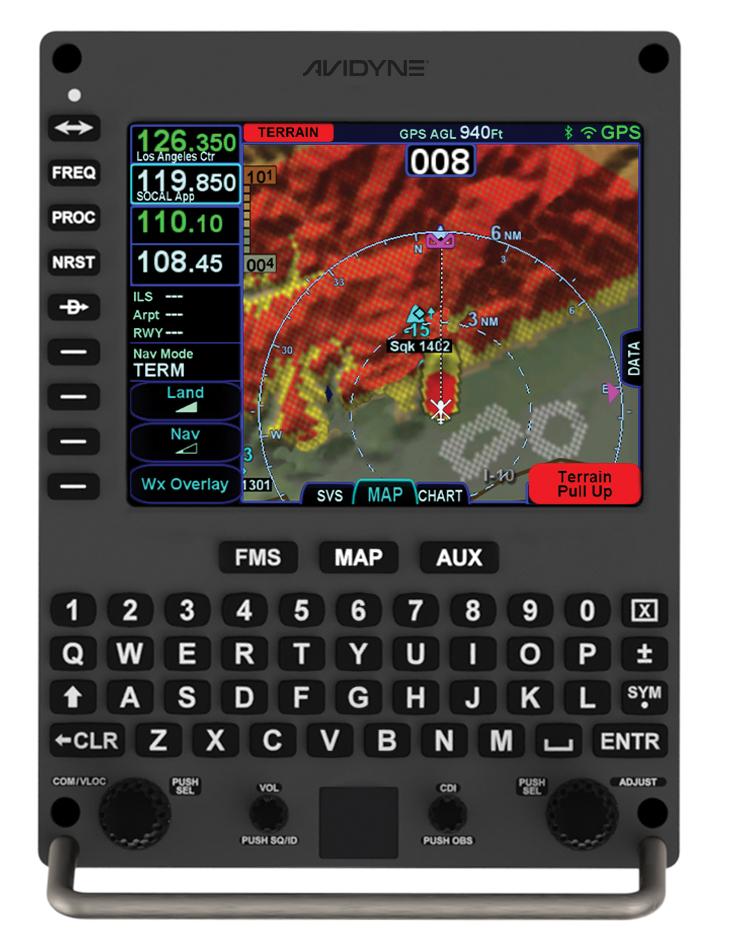
Dzus-mounted, Atlas includes a satellite-based augmentation system (SBAS) GPS navigator with required navigation performance (RNP) and area navigation (RNAV) capability. This includes localizer performance with vertical guidance (LPV), lateral navigation/vertical navigation (LNAV/VNAV), LNAV-only and approach procedures with vertical (APV) information.
The system also features a QWERTY keyboard, with Avidyne’s “Page & Tab” and hybrid touchscreen user interface, allowing crews to get to any function with only one or two button pushes. This would be a great upgrade for operators who previously chose to do a compliance-only ADS-B Out upgrade, as Atlas will provide them with the full benefits that SBAS has to offer.
The Melbourne, Florida, manufacturer’s GLAS provides a direct interface to legacy Collins Pro Line 21 and Honeywell Primus EFIS systems for vertical guidance during approach operations. This integration enables an EFIS certified before the availability of LPV approaches to have coupled guidance on these and other SBAS approaches.

Atlas boasts a variety of features. These include traffic display from TCAS or ADS-B, display of Jeppesen approach plates and airport diagrams with aircraft position shown on the charts, Wi-Fi and Bluetooth connectivity, integration with ForeFlight and other EFBs, and built-in USB charger. An integrated 16-watt VHF COM, VOR, localizer and glideslope radio is also available.
Avidyne’s multifunction Helios provides many of those same features for rotary-wing operators. Its options include 16-watt VHF NAV/COM with ILS, HTAWS, GLAS, radar control/display capability, NVIS (near vertical incidence skywave) compatibility and an RS-170 video input. The system features a built-in moving map with 3 arc-second terrain and powerline data, plus charts, and VHF NAV/COM, video, NVIS and radar options.
Collins
Collins is redefining flight operations for business aviation with a new digital Oceanic Plotting Chart for pilots. Available on the company’s ARINCDirect iPad app, it eliminates the paper plotting charts and manual processes commonly used today for navigating oceanic airspace.
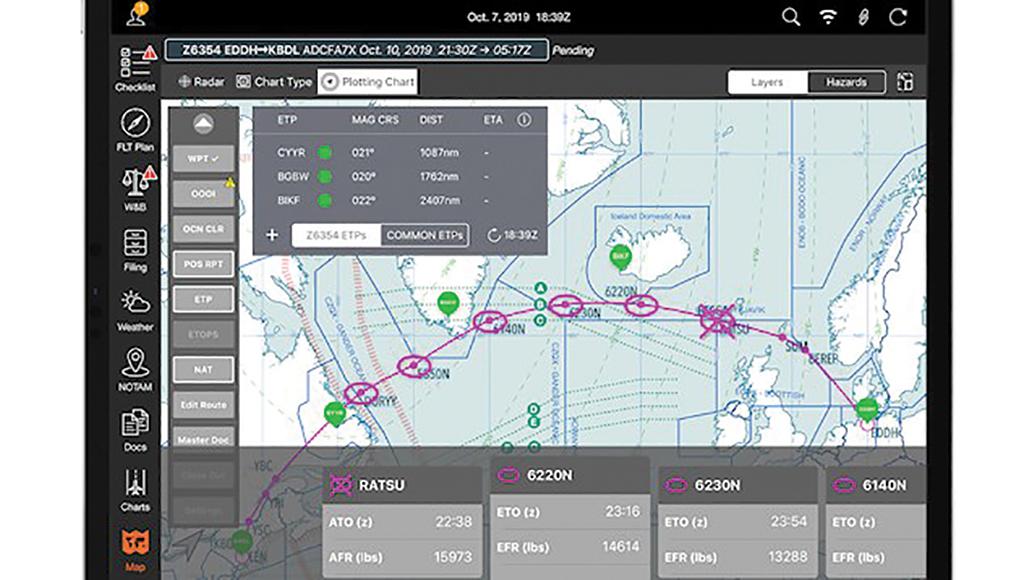
Free to ARINCDirect flight-planning subscribers, the chart plotter includes Live ETPs (equal time points), a feature that updates bearing, distance and arrival time constantly throughout the flight. Live ETPs are computed and updated for any scenario addressed with the flight plan including engine failure, depressurization and a medical emergency, thereby completely eliminating the need for manual computations.
Esterline CMC Electronics
DAC International and CMC Electronics have obtained FAA approval of their latest ADS-B Out STC for aircraft equipped with Honeywell Primus II avionics, thus providing an alternative to upgrading existing onboard Honeywell equipment.
The STC meets the DO-260B ADS-B Out worldwide mandate by replacing the existing non-compliant Primus II transponder with the Becker BXT6553 Diversity Transponder, paired with CMC Electronics’ CMA-3024 GPS/SBAS (GNSSU) receiver.
Further, it extends the operating life of a broad range of aircraft such as Bombardier’s Challenger 600 series, Hawker 800/800XP, Learjet 45, Gulfstream GIV/G450, Textron Cessna Citation II and V, and many more. The CMA-3024 sensor provides ADS-B-compliant SBAS/GPS primary means navigation and is fully compatible with all SBAS signals worldwide. With SBAS coverage, differential corrections are incorporated to provide RNP 0.1. Full installation kits, including the CMA-3024 and STC package, are provided by DAC.
In March, TransDigm Group of Ohio acquired Montreal-based CMC Electronics Esterline Technologies for approximately $4 billion.
FreeFlight Systems
Mexico’s Civil Aviation Federal Agency has validated FreeFlight Systems’ AML STC for the company’s Avail ADS-B. The package is intended to help turboprop and light jet owners in Mexico and Central America comply with ADS-B requirements.
Next, the Irving, Texas, company’s RA-4500 plug-and-play radar altimeter now comes with digital-to-analog converter capabilities, making the system a replacement for legacy altimeters like the KRA-405/405B. According to the manufacturer, the RA-4500 is ideal for TCAS I, single-install aircraft, like Citations and Learjets.
Also, FreeFlight recently joined the ACR Group’s portfolio of aviation companies, which includes ARTEX, Flight Data Systems, Latitude Technologies and SKYTRAC Systems, but it will continue to operate as an independent subsidiary.
Garmin International
In addition to the unveiling of its Auto-land system, Garmin has received FAA approval for the installation of the GTN 650Xi and GTN 750Xi for select helicopter models. Designed as a direct slide-in upgrade to the previous generation GTN 650/750, the all-in-one GPS/NAV/COMM multifunction display can integrate with new or existing remote-mount equipment such as a transponder or audio panel.
Preserving the same form factor as its predecessor models, the 6-in.-tall GTN 750Xi and the 2.65-in.-tall GTN 650Xi offer an intuitive touchscreen design with a dedicated direct-to button and dual concentric knob that ease interfacing with the display.
Helicopters currently approved for installation of the GTN Xi series include: Airbus AS350B2, AS350B3, EC120B, EC130B3 and EC130T2; Bell 206B, 206L, 206L-1, 206L-3, 206L-4 and 407; Enstrom F-28F, 280FX and 480B; and MD Helicopters 369E, 369F and 369FF.
Meanwhile, Garmin’s new G1000 NXi integrated flight deck upgrade for the King Air C90 offers a new capabilities and, when moving from the G1000, requires minimal aircraft downtime.
Flight Stream 510 and Connext technology within the G1000 NXi integrated flight deck enables the wireless transfer of aviation databases from the Garmin Pilot app on a mobile device to the G1000 NXi. Additional features include two-way flight plan transfer, and the sharing of traffic, weather, GPS information, back-up attitude information and more, between the NXi and Garmin Pilot, FltPlan Go and ForeFlight Mobile apps.
Visual approach guidance and map overlay within the HSI further enhance the NXi feature set. Within the HSI map, pilots can overlay NEXRAD, Flight Information Service-Broadcast (FIS-B) weather, weather radar, SafeTaxi airport diagrams, traffic, terrain and more. A split-screen view is also available on the MFD, offering a simultaneous view of maps, sectional and IFR low/high en route charts, checklists, flight plans and more on a single screen.
The G1000 NXi also supports the display of ADS-B In traffic and FIS-B weather. The addition of SurfaceWatch runway monitoring provides visual and aural cues to help prevent pilots from taking off or landing on a taxiway, on a runway that is too short or on the wrong runway based on performance data entered during preflight. Visual and audible runway distance remaining annunciations are also available.
This upgrade adds to the growing portfolio of aircraft eligible for the G1000 NXi integrated flight deck upgrade, including the King Air 200/300/350, Daher TBM 850/900, Cessna Citation Mustang, Piper PA-46 and soon, the Embraer Phenom 100. Upgrades to the G1000 NXi require little aircraft downtime or panel disruption because the displays preserve the same footprint and connectors.
Genesys Aerosystems
Remote-mounted and software-definable, Genesys Digital Radio (GDR) products feature combined VOR/localizer/glideslope and marker beacon nav and VHF comm with a frequency range of 118-136 MHz or 118-156 MHz and 25 or 8.33 kHz channelization with transmit power of 16 or 25 watts. Embedded UHF 225-400 MHz comm is optionally available. The radio is designed to interface to a host controller/displays.
The Mineral Wells, Texas, manufacturer specializes in cockpit integration. As an example, its IDU-680 EFIS display now integrates with the PAC45G digital audio controller from PS Engineering. The PAC45G is a TSOed audio management system that offers MultiTalker, a patented technology providing up to nine unique positions so that each radio has its own location within a stereo headset.
The Genesys IDU-680 EFIS displays feature a variety of PFD and MFD formats that can be configured to show flight instruments, moving map, HSI, flight planner, traffic, terrain, weather radar, data link, video, radio/audio management and engine displays. The IDU-680s also feature a built-in FMS and integrated Class-A TAWS.
Meanwhile, the company’s unique OASIS (Open Architecture System Integration Symbology) platform allows flexibility to display engine information, CAS messages and special-mission equipment. Its GPS and ADAHRS round out the offering.
Honeywell Aerospace
PJ18 4D Trajectory Management, a Honey-well project that’s part of the SESAR 2020 initiative, is intended to modernize air traffic management in the EU. SESAR (Single European Sky ATM Research) is now in its second phase.
The company says the system will enhance safety, efficiency and situational awareness for flight crews and passengers. It analyzes available weather and aeronautical data, sends updates to the aircraft via data link and displays the information graphically using the pilot’s EFB app.
PJ18 is one of several dozen SESAR projects in which Honeywell is involved and 4D Trajectory Management will help ATM authorities and operators handle greater volumes of future air traffic.
Meanwhile, with the introduction of Honeywell’s new Forge data-driven analytics platform, business aviation customers can have an ostensibly easy-to-use, integrated dashboard that sends real-time alerts on connectivity issues and flight plan changes. With full visibility into their services, customers can use the platform to tap into data that helps flight departments troubleshoot and fix issues as soon as they arise.
The next evolution of what was formerly known as Honeywell’s GoDirect portfolio, Forge is designed to improve passenger connectivity, help manage costs and give flight departments a better understanding of their fleet’s status in real time. It provides a full suite of mission-management capabilities in the areas of flight operations, nav databases and maintenance.
And for operators looking to access more airports, increase safety, reduce crew workload or meet the changing regulatory and airspace requirements, the Honeywell FMZ-2000 FMS version 6.1 upgrade contains significant improvements. The upgrade is required for the 2020 Future Air Navigation System (FANS) 1/A mandate on the Embraer Legacy 600/650, Dassault Falcon 900A/B/C/EX (non-EASy), Embraer Legacy 600/650, Gulfstream IV/IV-SP/V and Cessna Citation X.
Also, BendixKing’s AeroVue Touch PFD is now available for 353 aircraft types on the Approved Model List STC. The display has the highest-resolution EFIS on the general aviation market and features Honeywell’s SmartView SVS, terrain awareness, a moving map, a vertical situation display, aeronautical charts, and traffic and weather information. These are consolidated within a near-4K high-resolution, 10.1-in. touchscreen display. Every safety-critical function is accessible within two pilot touches on the display and all functions are available within four touches or less.
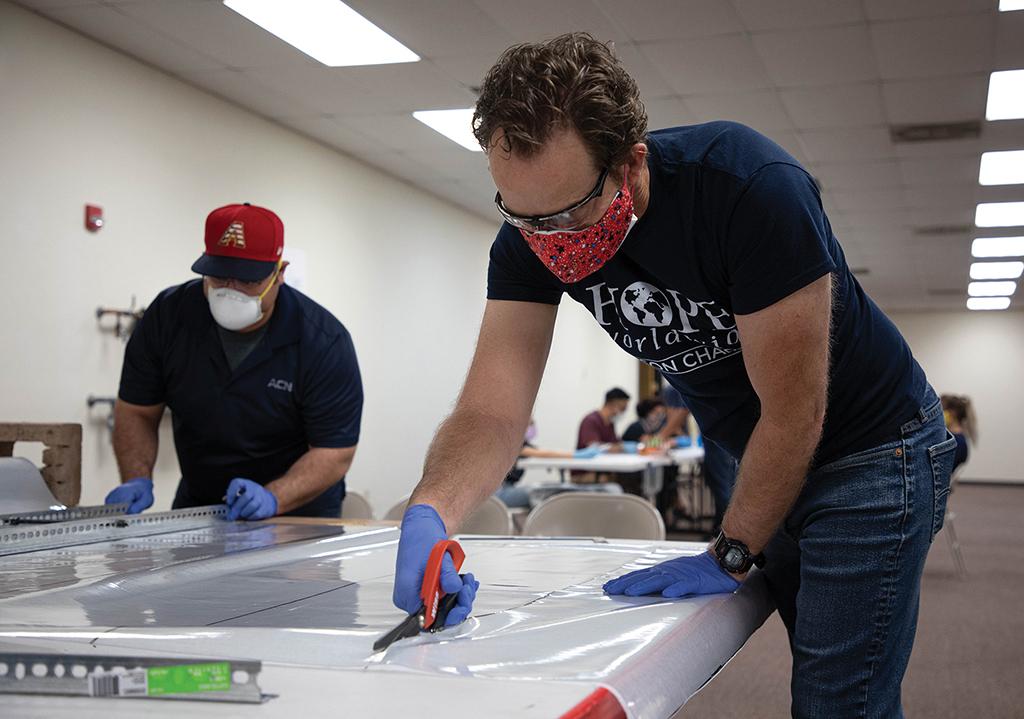
For owners upgrading to a digital cockpit, AeroVue Touch offers a modular and compact unit that comes with Wi-Fi and Bluetooth connectivity as standard. It allows pilots to seamlessly upload flight information in under 4 min. and software updates in less than 10 min. and also has self-contained architecture, which allows the system to be easily expanded to two or three displays.
BendixKing has obtained an STC for the AeroFlight KA 310 autopilot adapter, enabling the KI 300 to be used as a sole-source, three-axis attitude reference and flight director for BendixKing KAP 100, 150 and 200 and KFC 150, 200 and 225 autopilots. The company says that with the upgrade, owners save the typical $4,000 to overhaul mechanical gyros every 800 hr., while also having much of the same information available in a PFD at a much lower cost.
And the BendixKing AeroCruze 230 touchscreen autopilot is also now available for certified aircraft. A slide-in replacement for the KFC 150, the AeroCruze 230 reuses the servos already in the aircraft, dramatically cutting down on installation cost. Purchase of the AeroCruze comes with a new two-year warranty on those servos.
IS&S
The FAA has awarded a first-of-its-kind STC to Innovative Solutions & Support for technology to protect against one-engine-inoperative (OEI) loss-of-control accidents. Authorities suggest such mishaps are responsible for as many as 90 fatalities annually.
The IS&S autothrottle upset protection system automatically adjusts power in the operating engine to provide the maximum safe thrust, preventing severe yaw that can catastrophically upset the aircraft. The system is available for rapid retrofits.
Meanwhile, the Exton, Pennsylvania, manufacturer has received the first FAA STC for its patented ThrustSense autothrottle for retrofit in King Airs. The system provides FADEC-like engine protection and is a full regime autothrottle, from takeoff to landing phases of flight, including go-around. Accordingly, it allows the pilot to automatically control the power setting of the engine. ThrustSense computes and controls appropriate power levels, reducing pilot workload while providing a new level of convenience and safety.
L3Harris Technologies
Express Readout, L3Harris Technologies’ new automated aircraft recorder validation service, provides detailed reports about recorder functionality. Global aviation authorities require aircraft operators to provide annual compliance for FDRs and CVRs, including those with data link capabilities, to prove they are functioning correctly. Express Readout allows operators to upload the recorder files to a secure server for validation, without manually removing the device.
According to the Melbourne, Florida, manufacturer, Express Readout’s patented algorithms also identify unusual parameter patterns and highlight these to the user for inspection. Interactive charts allow users to inspect every parameter in detail and assess up to 50 flight hours of data, across multiple flights, within the same readout. Users can download the report files in various formats and the results are stored indefinitely on the secure platform, exceeding regulatory requirements.
Express Readout is available as an automated self-service solution or as a full-service validation, which includes an expert assessment on the recorded data.
Universal Avionics
Universal Avionics has obtained EASA certification for its ClearVision enhanced flight vision system (EFVS) with SkyLens head-wearable display (HWD).
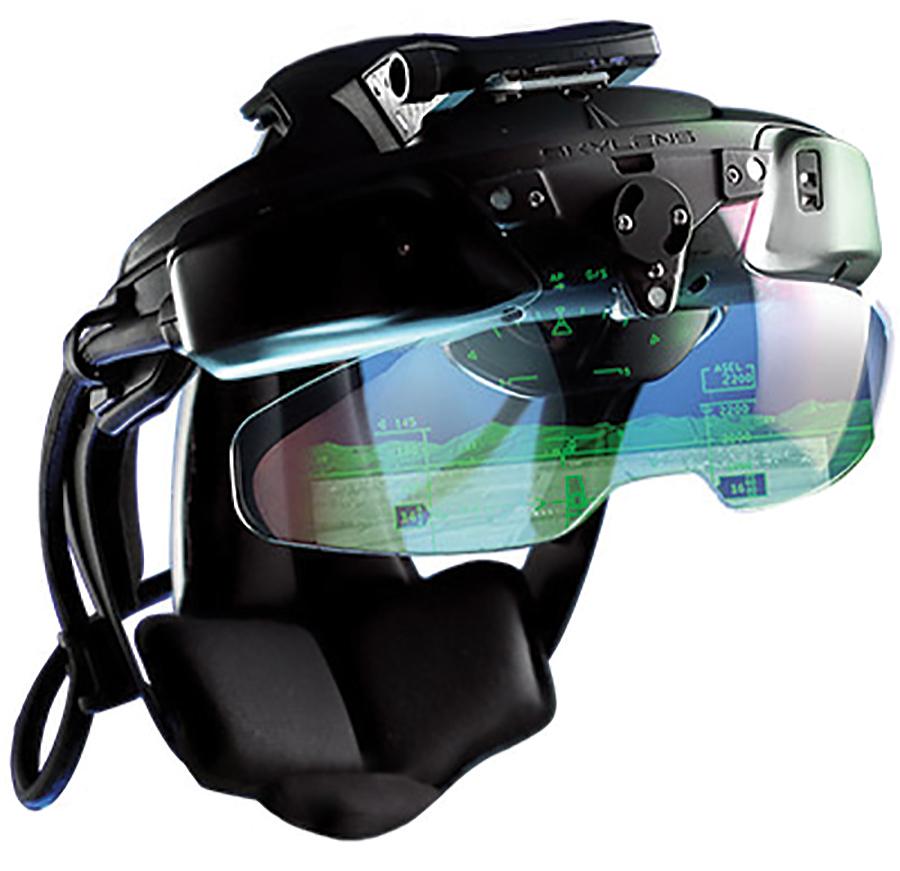
ClearVision provides head-up operations combined with enhanced vision (EVS), synthetic 3D terrain display (SVS), and a unique and optimized combined vision system (CVS). For greater flexibility, it interfaces with a variety of display options: traditional fixed head-up display (HUD) systems, head-down flight display systems or wearable devices like the “near-to-eye” SkyLens HWD. All these options offer pilots unprecedented situational awareness, enhancing what they can see with “natural vision” in degraded visual environments and adverse weather conditions, day or night.
Universal says ClearVision can provide relief to approach bans under FAR Part 121 operations and allows operators to use its enhanced flight visibility to meet the flight visibility required to depart to a destination or begin an instrument approach.
To Our Health
How well business aviation weathers the coronavirus crisis is anybody’s guess at this point. But while we’re all while practicing personal distancing, and complying with stay-at-home requests, catching up on sleep, enjoying our families and exercising more, we suggest checking your aircraft’s avionics maker’s website for some terrific online webinars and training programs.




